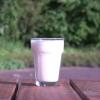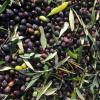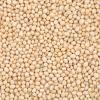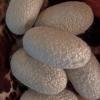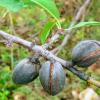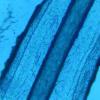Proteins
Proteins are among the most critical substances in the body, in which they have a wide variety of functions. They are the building blocks of living organisms and are indispensable to all life processes. The many favorable properties of proteins can be utilized for cosmetic purposes. As bioactive substances, they play a key role in many cosmetic products.
These natural polymers consist of long chains of amino acids that are good sources of essential building blocks for collagen and elastin fibers, natural moisturizing factors (NMFs), and antioxidants, protecting skin from free radicals and UV-induced damage. Proteins are used in almost all kinds of skin and hair care products. They are an indispensable component of modern formulations: Those valuable active substances, which are always relevant to contemporary trends. Furthermore, they are used to enable cosmetic products to satisfy consumer expectations and, in particular, to ensure that they comply with desired claims of efficacy, as explained below. Last but not least, a protein's origin, for example, keratin, almond, or wheat, is crucial to its characteristics, and its effects are essential for the development of marketing concepts.
Some proteins have beneficial effects on skin regeneration, cell renewal, and microbiota balance. Others create non-sealing films on the skin and hair, protecting them from damaging environmental factors, smoothing texture, or giving a silky shine. Vegetable-sourced proteins are steadily gaining importance. Materials of vegetable origin, such as wheat, rice, and almonds, are available, opening the door to positive associations, and providing skincare products from renewable materials, and convincing "green" concepts.
OlivOil Avante is a natural, PEG-free, and soft surfactant of botanical origin based on oat and olive oil.
Olivoyl Hydrolyzed Wheat Protein (Olivoyl Glutinate) is a completely vegetable surfactant combining the exceptional fatty acid profile of Mediterranean olive oil (around 85% of unsaturated fatty acids and vitamin E) with vegetable proteins, extracted from wheat by gluten hydrolysis.
Potassium Abietoyl Hydrolyzed Soy Protein is a potassium salt of a condensation product of abietic acid and hydrolyzed soy protein, a functional surfactant of lipo-proteic origin. Its 30% aqueous solution is a clear amber-to-yellow liquid with a characteristic odor.
Potassium Cocoyl Hydrolyzed Collagen is a potassium salt of the derivative of the reaction of collagen polypeptides and fatty acid. It has excellent foaming and cleansing properties and forms clear solutions at a pH > 6.5.
Potassium Cocoyl Hydrolyzed Oat Protein is a potassium salt of a condensation product of coconut acids with hydrolyzed oat protein. It is a functional surfactant derived from natural raw materials coconut acids and Oat protein.
Potassium Cocoyl Hydrolyzed Soy Protein is a sodium salt of a condensation product of coconut acids with hydrolyzed soybean proteins, a functional natural-derived surfactant. Its aqueous solution is a clear amber-yellow liquid with a slight odor.
Collagen is a major structural protein forming vast resilient sheets that support the skin and softer tissues. Collagen is significant in retaining the youthfulness and elasticity of the skin.
Calcium is involved in maintaining healthy cell membranes and regulates the passage of nutrients in and out of cells. Saccharomyces cerevisiae fermentation in Calcium ions rich media results in a complex wherein polypeptides function as carriers of Ca2+ minerals.
Germanium has been included for its free radical scavenging properties and ability to improve oxygen utilization.
There is a long history concerning the use of seawater in health and beauty due to its wealth of micro and macro minerals. Seawater has been shown to exhibit spectacular effects with regular use. The use of sea salts in bath water can imitate the curative effects of mineral springs.
Possibly no word conjures up more emotion than silk. Garments produced from this protein fiber have been held in high esteem for centuries. Silk has been prized for its feel, its magic, and its aura of quality.
Sodium C8-16 Isoalkylsuccinyl Soy Sulfonate is a modified protein with a lipid moiety that disrupts the surface tension of sebum on the skin by naturally binding to excess sebum.
Sodium Cocoyl Hydrolyzed Amaranth Protein is a blend of foaming polypeptides of natural origin used as a secondary surfactant in cleansing applications. It consists of colloidal peptides and carbohydrates derived from Amaranth (Amaranthus caudatus) grain grown organically in Peru.
Manufactured from a high-quality hydrolyzed soy protein, derived from sun-ripened soya beans, and a stripped coconut fatty acid, Sodium Cocoyl Hydrolyzed Soy Protein provides mild, gentle conditioning and generates a rich, natural lather.
Sodium Cocoyl Hydrolyzed Sweet Almond Protein is a functional anionic surfactant. It is derived from coconut acids and sweet almond protein for its selective and physiological cleansing action, reducing the irritation potential of traditional surfactants.
Sodium Cocoyl Hydrolyzed Wheat Protein is a sodium salt of the gluten derivative that is made from hydrolyzed wheat protein and stripped coconut fatty acid. The wheat protein is wheat gluten, which is extracted from the grain. It contains high levels of glutamic acid and glycine.
The sea is the source of all life. Soluble Collagen has been developed utilizing a variety of marine species that are rich in essential minerals and have excellent moisturizing and film-forming properties. It is also made from cattle hides using a weak acid/neutral salt extraction process.
Soluble Keratin is a water-soluble keratin hydrolyzate, a polymer of natural origin. It exhibits excellent compatibility with the skin and hair because it is derived from natural Keratin, a key structural material found in human skin, hair, and nails.
TEA-Cocoyl Hydrolyzed Collagen is a fatty acid protein derivative that has been neutralized with triethanolamine improving its foaming and solubility.
Triticum Vulgare Germ Protein is a natural ingredient derived from wheat germ. It is a multifunctional active for skin care applications and is valued for its tensor, smoothing, and moisturizing effects.
Triticum Vulgare Gluten is a natural non-hydrolyzed wheat protein from the grain's endosperm with remarkable hydrophobic properties. It exhibits preferential binding characteristics to damaged hair areas.
Triticum Vulgare Protein is a high molecular weight protein fraction received from soft wheat. Thanks to its film-forming and mechanical "lifting" properties, wheat protein provides a noticeable instant protective and anti-aging effect.
